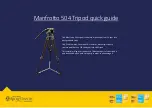
Services Menu
WILINK I MODULAR BASE STATION SYSTEM MANUAL
133
packets. However, the same SU and untagged packets can be associated with
two Services of different Service Types, excluding the combination of L2
Service and Voice Service.
The maximum total number of VLAN IDs behind the same SU is 16 (15 when
there is a Service with Hybrid VLAN Mode On is assigned to the SU).
The combination of VLAN Transparency Service On, Hybrid VLAN Mode Off
and an empty VLAN List means that all packets are forwarded. This
combination should be used only if the Service Provider can ensure that there
will not be conflicts between VLAN IDs used by devices behind the SU and
existing VPL IDs.
To avoid conflicts, a transparent Service Profile cannot be assigned to a
Service if the Service’s VLAN ID list includes a VLAN ID that is equal to any of
the already assigned VPL IDs.
The combination VLAN Transparency Mode On, Hybrid VLAN Mode On and
an empty VLAN List means that only untagged frames should be forwarded.
Such a Service cannot be assigned if there is an assigned non-transparent
Service with VPL ID = None.
4.10.2
Introduction to Filtering Features
The Filtering features allow a network operator to control the traffic in the system
by forwarding or discarding packets according to a set of rules based on multiple
allow/deny criteria. This provides both improved network security and better
utilization of the wireless medium.
The filtering is done at the base station, controlling the traffic between the
network and the wireless link. The filtering features enable:
Filtering packets arriving from the network interface (From Network Filtering),
using a set of either Layer 2 or Layer 3/Layer 4 Filtering Rules.
Filtering packets arriving from the wireless link (From Wireless Filtering),
using a set of either Layer 2 or Layer 3/Layer 4 Filtering Rules.
Discarding packets to/from specific MAC addresses (MAC Address Deny List).
This is applicable to MAC Addresses behind SUs.
The filtering functionality is described in Figure 4-4.
















































